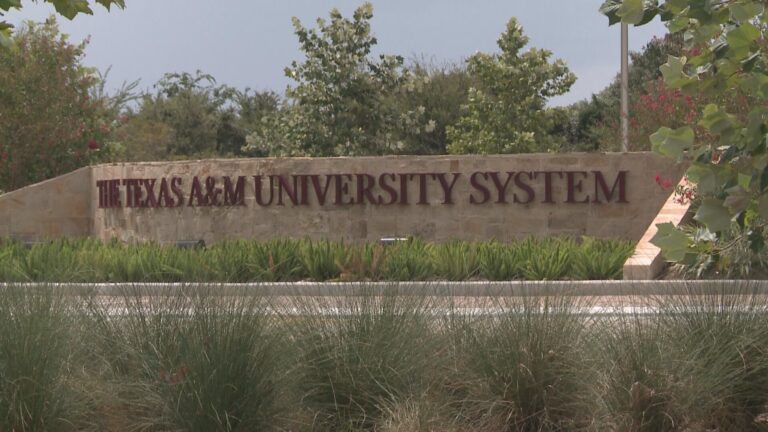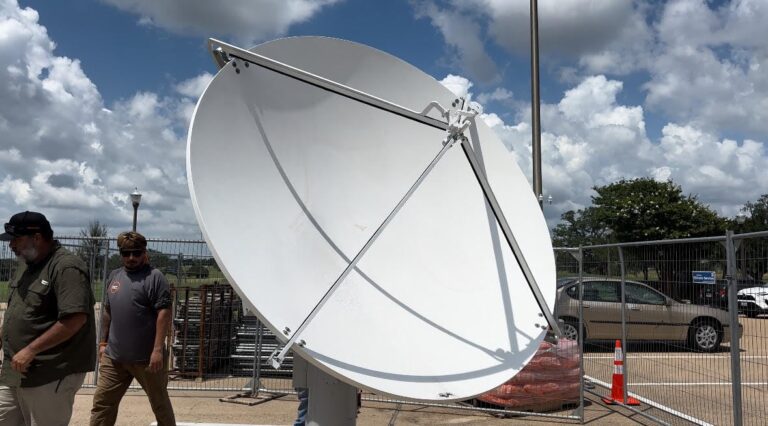Texas A&M and state leaders join forces to strengthen semiconductor industry
COLLEGE STATION, Texas (KBTX) – Microchips, also known as semiconductors, play a crucial role in powering electronic devices such as computers, cars, and cell phones. To strengthen the semiconductor industry and meet the growing demand, Texas A&M University, in collaboration with federal and state leaders, is actively working to develop advanced technology and enhance the semiconductor workforce.
Texas has earmarked $1.4 billion for semiconductor research and manufacturing, intending to secure state and federal grants and create high-paying job opportunities in the coming decade. Lawmakers in the state emphasize that semiconductor production remains a top priority for them.
Semiconductor research at Texas A&M. Photo courtesy of Texas A&M University. (Texas A&M University /)
District 18 Senator Lois Kolkhorst praised the Texas Chips Act, which aims to bring semiconductor manufacturing back to the United States, reducing dependence on foreign sources and strengthening national security.
“Chips are everywhere in our life, and it’s really become very critical for our national security and so the Texas Chips Act, big money, big vision, and I think it’s going to produce big results,” said Kolkhorst.
The Texas CHIPS Act, signed by Governor Greg Abbott during the recent legislative session, establishes the Texas Semiconductor Innovation Consortium to safeguard the state’s competitive standing for future federal funding. Additionally, it authorizes the Texas Semiconductor Innovation Fund to support semiconductor manufacturing and design projects. The fund will receive contributions from the state’s General Revenue to provide matching funding to state entities, including higher education institutions, as well as grant awards to business entities for semiconductor-related economic development.
District 18 Senator, Lois Kolkhorst (Donnie Tuggle/Bryan-College Station)
Senator Kolkhorst emphasized that both state and federal lawmakers are keen on bringing manufacturing jobs back to the United States and safeguarding national security. She noted that the COVID-19 pandemic exposed vulnerabilities in the supply chain, prompting a reevaluation of the nation’s dependence on foreign semiconductor production.
“The federal law is bringing that manufacturing of producing chips back to the United States. We we’re overly dependent on Taiwan, and everyone knows the tension between Taiwan and China,” said Kolkhorst. “We saw a breakdown in our supply chain when COVID hit, and I think it was a wake-up call for all of us,” said Kolkhorst.
Giesecke Engineering Research Building at Texas A&M. (Donnie Tuggle/Bryan-College Station)
At Texas A&M University, efforts are already underway to develop the next generation of semiconductor technology while preparing future engineers and industry leaders. David Staack, Associate Vice Chancellor for Research at Texas A&M University, emphasized the significance of semiconductor manufacturing for national security.
“The semiconductor industry is a unique industry in that it is some of the most complicated manufacturing that happens,” said Staack.
“The manufacturing of high resolution, high fidelity semiconductors in Texas and in the U.S. is very important to our national security and we are putting our brains and putting our financial resources that we’re getting from the state and hopefully from the federal government behind it,” Staack added.
David Staack PhD, Texas A&M Associate Vice Chancellor for Research (Donnie Tuggle/Bryan-College Station)
Adriana Cruz, the State’s Executive Director of Economic Development and Tourism, underscored the significance of collaboration with universities like Texas A&M in driving economic and national security.
“They are the source of our workforce. They are going to be where the workforce of our future is educated and trained. They’re also the source for the research and development in the cutting edge research,” said Cruz.
Adriana Cruz, the State’s Executive Director of Economic Development and Tourism. (Donnie Tuggle/Bryan-College Station)
Cruz praised the state’s leading position in the semiconductor industry with Texas currently exporting more semiconductors than California, Arizona, and New York combined. The semiconductor industry in Texas employs around 43,000 people, making it a critical contributor to the state’s economic growth and prosperity.
“We have the right business climate. We have the right regulatory climate. We have the workforce, and we have the higher education institutions that are doing the research and development necessary for the future of this very important industry,” said Cruz. “At the Texas Economic Development and Tourism Office, our mission is to grow the economy of the state and ensure economic prosperity for all Texans.”
“The semiconductor industry is certainly a very important one for the state of Texas. Texas is the birthplace of the integrated circuit and is really leading the nation and the world in terms of the future of semiconductors,” Cruz added.
In October, Texas A&M will host the Texas Semiconductor Summit, which will bring together stakeholders from industries, universities, and workforce development programs in the state. Representatives from the federal CHIPS and Science Act, the Secretary of Commerce, and state officials will attend the summit to discuss Texas’ support for the act.
TEEX also recently unveiled its latest offering, the online, self-paced course titled “Introduction to Semiconductor Processing.” This new course is designed to assist the workforce in enhancing production efficiency and elevating product quality.
The current semiconductor R&D fabrication facilities are on the first floor of the Giesecke Engineering Research Building, which is currently undergoing construction on the Texas A&M campus. Officials say the new planned facilities will be a significant expansion of capabilities and will be on the RELLIS campus, pending approval by the board of regents in August.
RELLIS Campus: Photo KBTX’s Warren Vause. (Warren Vause/)







